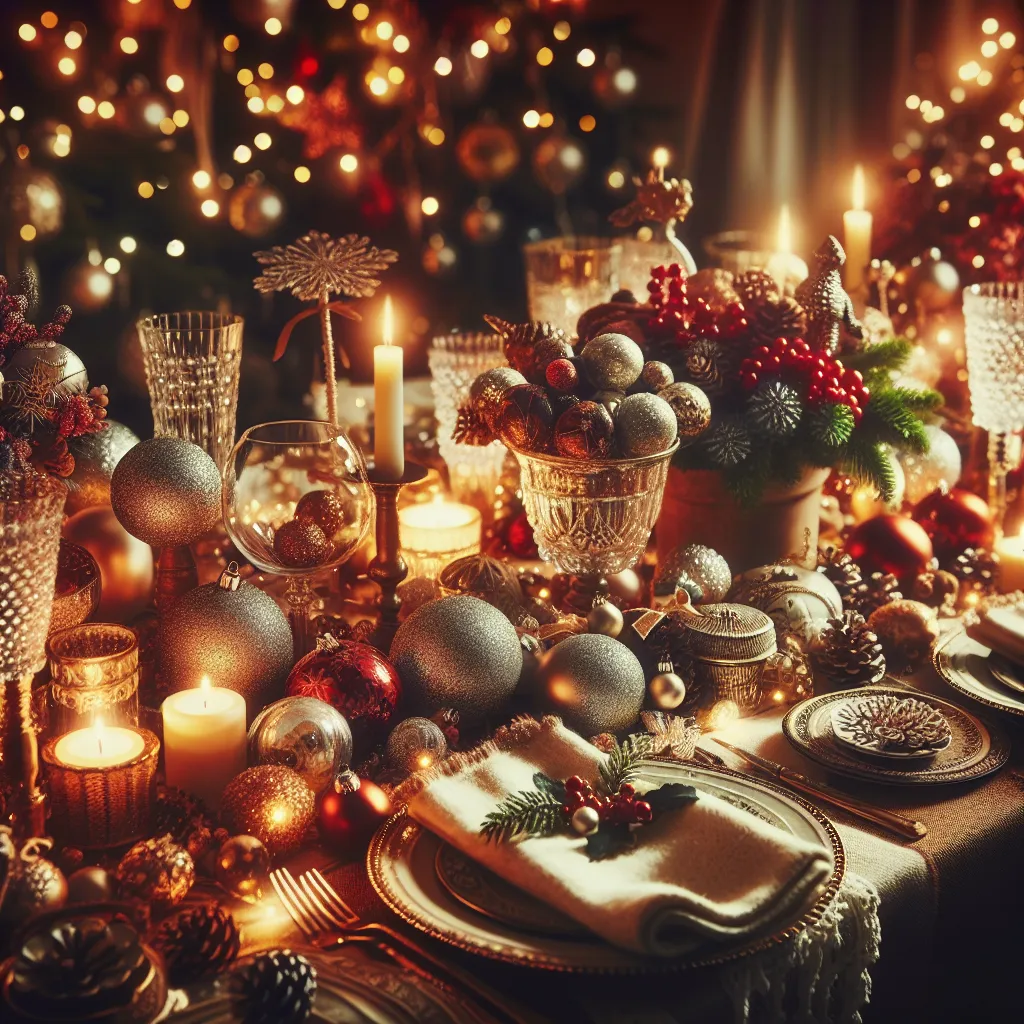The History of Seasonal Baubles
Seasonal baubles have played a significant role in holiday decor for centuries, adding a touch of sparkle and cheer to festive celebrations. The history of seasonal baubles dates back to ancient times when people would decorate their homes with natural elements such as flowers, fruits, and evergreen branches to mark the changing seasons and important holidays.
In the 16th century, the tradition of decorating a tree with ornaments became popular in Germany, with the use of fruits, nuts, and candles. This custom evolved over time, and by the 19th century, it had spread across Europe, leading to the production of intricate glass baubles in various shapes and colors. The Industrial Revolution further fueled the mass production of seasonal baubles, making them more accessible to people of all backgrounds.
The significance of seasonal baubles lies in their ability to evoke feelings of nostalgia and tradition, serving as a reminder of cherished memories and joyful moments. As holiday decor continues to evolve, seasonal baubles remain a timeless symbol of the festive spirit, carrying with them a rich history that adds depth and meaning to their presence in contemporary celebrations.
Cultural Significance of Holiday Decor
When it comes to holiday decor, seasonal baubles play a significant role in reflecting the cultural traditions and heritage of different societies. These festive ornaments, whether they are Christmas baubles, Hanukkah decorations, or Diwali embellishments, are deeply rooted in the cultural significance of holiday celebrations around the world.
For example, in many Western cultures, the tradition of decorating Christmas trees with baubles and ornaments dates back to the 16th century in Germany. The practice later spread to other parts of Europe and eventually became a widespread symbol of Christmas celebrations. Each ornament on the tree carries its own cultural significance, ranging from religious symbols to representations of family unity and prosperity.
Likewise, during the Jewish festival of Hanukkah, the display of menorahs, dreidels, and other decorative items holds profound cultural significance, symbolizing the triumph of light over darkness and the preservation of Jewish traditions. These decorations serve as visual reminders of the historical and cultural narratives that define the holiday.
In the Indian festival of Diwali, vibrant and colorful decorations, including Diyas (clay lamps), Rangoli (decorative designs made on the floor), and garlands, are essential elements in celebrating the triumph of good over evil and the significance of light in dispelling darkness. These decorations are deeply ingrained in the cultural and religious fabric of the festival, connecting individuals to their heritage and beliefs.
Overall, the cultural significance of holiday decor extends far beyond mere aesthetics. It serves as a tangible representation of shared traditions, values, and stories, enriching the festive experience with meaningful connections to cultural identity and heritage.
Evolution of Seasonal Ornaments
Seasonal baubles, also known as ornaments, have been an integral part of holiday decor for centuries. The evolution of seasonal ornaments reflects the changing traditions and cultural influences that have shaped our festive celebrations. From simple and natural decorations to elaborate and personalized ornaments, the significance of these baubles goes beyond mere adornment.
The origins of seasonal ornaments can be traced back to ancient civilizations, where they were often made from materials such as wood, dried fruits, and even precious metals. These early ornaments were symbolic representations of nature, fertility, and the cycle of life. As traditions evolved, so did the designs of these ornaments, incorporating religious symbols, intricate craftsmanship, and vibrant colors.
During the Victorian era, seasonal ornaments experienced a significant transformation with the introduction of glass blown baubles. The intricate designs and delicate beauty of these ornaments became highly coveted, signifying a shift towards more ornate and decorative holiday displays. With the advent of modern manufacturing techniques, seasonal ornaments became more accessible, allowing for a wider array of designs and styles to enter the market.
Today, seasonal ornaments come in a myriad of forms, from traditional handcrafted decorations to contemporary, themed baubles. The evolution of seasonal ornaments continues to be influenced by cultural diversity, artistic trends, and the desire for personalized holiday decor. Whether cherished family heirlooms or trendy, pop-culture inspired baubles, these seasonal ornaments now play a pivotal role in expressing individual holiday traditions and spreading festive cheer.
In conclusion, the evolution of seasonal ornaments mirrors the dynamic nature of our holiday traditions, showcasing the enduring significance of these decorative elements in our festive celebrations.
Modern Trends in Holiday Baubles
When it comes to holiday decor, seasonal baubles play a significant role in creating a festive atmosphere. Modern trends in holiday baubles have evolved to embrace a variety of styles and materials, reflecting contemporary design preferences and cultural influences. One prominent trend is the shift towards minimalist and sleek baubles, featuring clean lines, geometric shapes, and metallic finishes. This modern aesthetic appeals to individuals seeking a sophisticated and understated look for their holiday decorations.
Furthermore, eco-conscious consumers are gravitating towards sustainable and environmentally friendly holiday baubles. These modern iterations prioritize natural materials, such as wood, glass, and recycled components, aligning with the growing demand for eco-friendly products. Additionally, the emphasis on handmade and artisanal baubles has gained momentum, as consumers seek unique and personalized ornaments that reflect individuality and craftsmanship.
Another modern trend in holiday baubles is the incorporation of technology, with LED lights and interactive elements becoming increasingly popular. From illuminated baubles to programmable light displays, technology-infused decorations add a contemporary touch to traditional holiday adornments, appealing to tech-savvy individuals looking to integrate innovation into their festive decor.
In conclusion, the modern trends in holiday baubles reflect an intersection of style, sustainability, and innovation. As consumer preferences continue to evolve, the market for holiday decor responds with a diverse array of baubles that cater to contemporary tastes, environmental consciousness, and the desire for technological integration.

